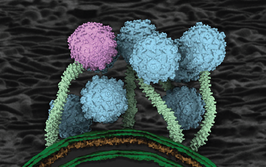3D Printing Unleashed
Additive manufacturing is so much more than just “cool” technology; it holds great promise for the biopharma industry
Klas Marteleur | | Opinion

Additive manufacturing – or 3D printing – is the process of creating a physical object layer by layer, using different materials, such as stainless steel, titanium or nylon. 3D-printed components find their way into diverse products, including jet engines, cars, and bioprocess instruments. Until recently, 3D printing was primarily used in product design departments to quickly create prototypes for testing purposes during development. Thanks to advances in printing technologies, manufactured (printed) components are equal to, if not better than, those produced by conventional technologies; in short, 3D printers are now ready to be used to improve end products.
In my view, the benefits of 3D printing technology are significant. Products will be smaller, lighter, and more optimized for the task; studies conducted here at Cytiva have shown that we can use 80 percent less material in some stainless-steel components using 3D printing! We can save even more material if we can consolidate several components into one (and we often can). By consolidating parts and reducing the number of joints in a bioprocess instrument, quality can also be improved and the risk of leakage reduced. It follows, then, that every instrument will be reduced in size and the productivity per square meter will improve. Imagine the innovation that could take place thanks to this increased design freedom.
Additive manufacturing will also help the biopharma industry reach its sustainability goals faster. Reducing material usage has a ripple effect. Lighter components require lighter frames or chassis to carry the components, and consolidation of components will lead to smaller instruments that require less space in the clean rooms. For example, chromatography instruments with many components and long lengths of piping could be reduced in size. A smaller and lighter instrument will also reduce the climate impact from transportation, and reduce the amount of chemicals needed to clean and maintain the instrument.
So what’s the holdup? Why isn’t the industry making greater use of 3D printing? To answer that, I need to go into more technical detail. Until now, the focus has been on the 3D printing machines themselves: making them better, faster, more accurate, and able to handle more materials. This work will continue but, for the components needed in life sciences products, post processing is equally important.
There are many different 3D printing technologies and, depending on the application, the resulting parts will require different types of post-processing. For example, if you print complex components, such as a manifold of a chromatography system, in stainless steel, you’ll end up with rough surfaces directly from the printer. For use in a life science product, the component must have those surfaces polished – especially those areas in direct contact with the process contact – to improve cleanability and reduce the risk of cross contamination and bioburden. It is important to have control over each step in this manufacturing process to understand how they affect the result.
When it comes to the cleanliness of surfaces, the definition of “clean” depends on who you ask. If you ask a child if she washed her hands carefully before dinner and you watch her during the process, you might have a different opinion. And that does not necessarily mean that the child didn’t try to clean her hands; more likely, it is that you have more experience and knowledge about what it takes to clean hands properly. It is similar in the 3D-printing industry.
There are many good print shops that can 3D print the physical part – and some that can even post-process it so it looks good, but there are not many that actually understand the requirements on a part that will end up in a life science product. It is important to have full control over the complete manufacturing process – from the raw material that goes into the 3D printer to the final post-processing and assembly steps – to ensure no harmful substances are able to leach into, destroy, or contaminate the customer process. To maintain full control, we decided to invest in essential technologies, including 3D printers and post-processing equipment.
The biggest threat to a wider implementation of additive manufacturing in the life sciences space is that we tend to stop challenging the way we do things today. If we just 3D print whatever designs we have today, little is won. For example, a simple sheet metal bracket can easily be made by bending a piece of sheet metal the traditional way, so 3D printing makes no sense. Instead, we need to rethink and redesign components and systems to unleash the power of 3D printing. We need to continue developing standards and technologies in parallel, while focusing on what is important and not discarding new solutions just because they might look different. Of course, we must never compromise on quality.
There are many opportunities with 3D printing, but there are no quick wins and plenty of challenges to overcome. Stamina, long-term vision, and the freedom to creatively challenge assumptions are all necessary to reach the goal. Naturally, an area with this much potential benefits from collaboration; working with customers and academia is crucial when it comes to understanding the real needs and opportunities.
By identifying pain points in existing products and then researching and developing new technologies to address those issues directly, I believe we can realize the next generation of biopharma equipment.



















